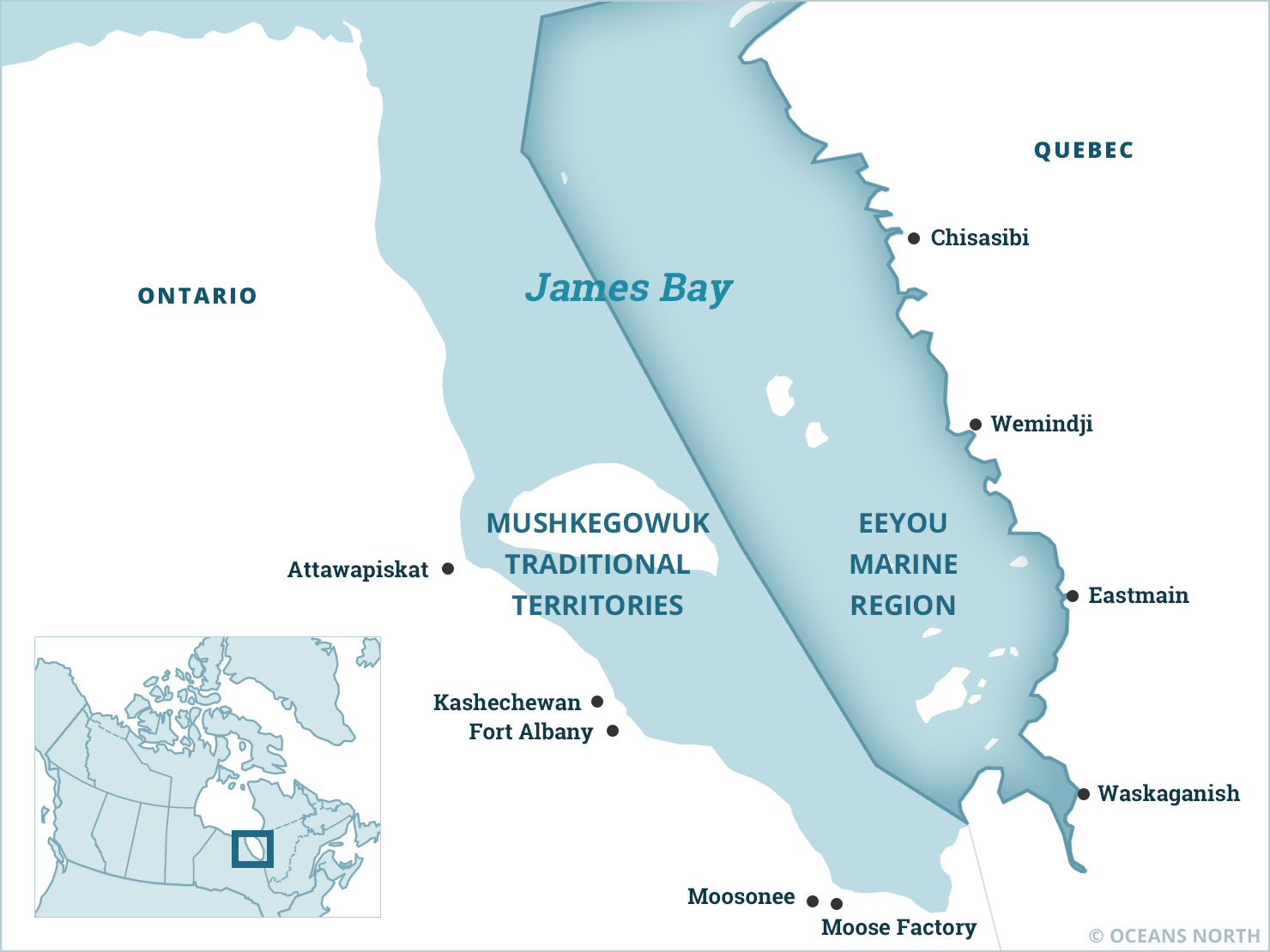James Bay, known as Weeneebeg in western Cree and Wiiniibek in eastern Cree, is located on the southernmost edge of Canada’s Arctic Ocean.
Linking North to South
Some refer to it as an inland sea, while others call it a large estuary. Weeneebeg, covering an area of approximately 68,000 square kilometres, is larger than the province of Nova Scotia, and receives freshwater from many of the major rivers of Ontario and Quebec. In James Bay, this freshwater mixes with saltwater from western Hudson Bay and returns these freshly mixed waters back to eastern Hudson Bay.
Weeneebeg is home to nine coastal Mushkegowuk (western Cree) and Eeyou (eastern Cree) communities that continue to use this marine environment for travel and harvesting. Many fish and waterfowl are harvested along the shores and coastlines, including trout and Canada geese. People travel by boat in the summer and snowmobile in the winter across the bay’s natural highways to reach harvesting locations, hunt camps, and neighbouring communities.

The western portion of James Bay lies within the Mushkegowuk Traditional Territories. The eastern portion is covered by the Eeyou Marine Region Lands Claim Agreement, which provides constitutionally protected rights to the Eeyou and a co-management arrangement between Cree and the federal government.
A shallow bay with heavy river inputs results in warm and productive waters, creating a home for a globally unique, year-round population of beluga whales and the southernmost populations of polar bear and walrus in the world. It is a hotspot for millions of migratory shorebirds and waterfowl, who feed and breed here and create an ecosystem linkage between the northern and southern hemispheres.
Protecting Weeneebeg/Wiiniibek
James Bay is under threats from climate change, as well as industrial development. Hydroelectric developments in some of the major rivers that flow into the bay from Quebec have resulted in changes to the amount of freshwater entering these waters during the winter. That affects ice formation and the animals which rely on it. Proposed mining developments in the headwaters of major rivers and the peatlands in Ontario pose the potential risk of contaminated water entering James Bay. The impacts of climate change also have cascading effects throughout the entire marine ecosystem.
Oceans North supports several Indigenous-led initiatives in Weeneebeg, including the proposed Mushkegowuk National Marine Conservation Area in western James Bay and southwestern Hudson Bay and the proposed Eeyou Marine Region National Marine Conservation Area. These NMCAs will contribute significantly towards Canada’s goal of conserving 30 per cent of our lands and waters by 2030.
We are also supporting important marine research in the region. This includes collaborating with the University of Manitoba and Cree representatives from both sides of the bay to work on marine research in 2021 and 2022. Oceans North fully supports and is collaborating with Cree governments, councils, and communities to advance Indigenous-led research and conservation that will protect Weeneebeg for future generations.

